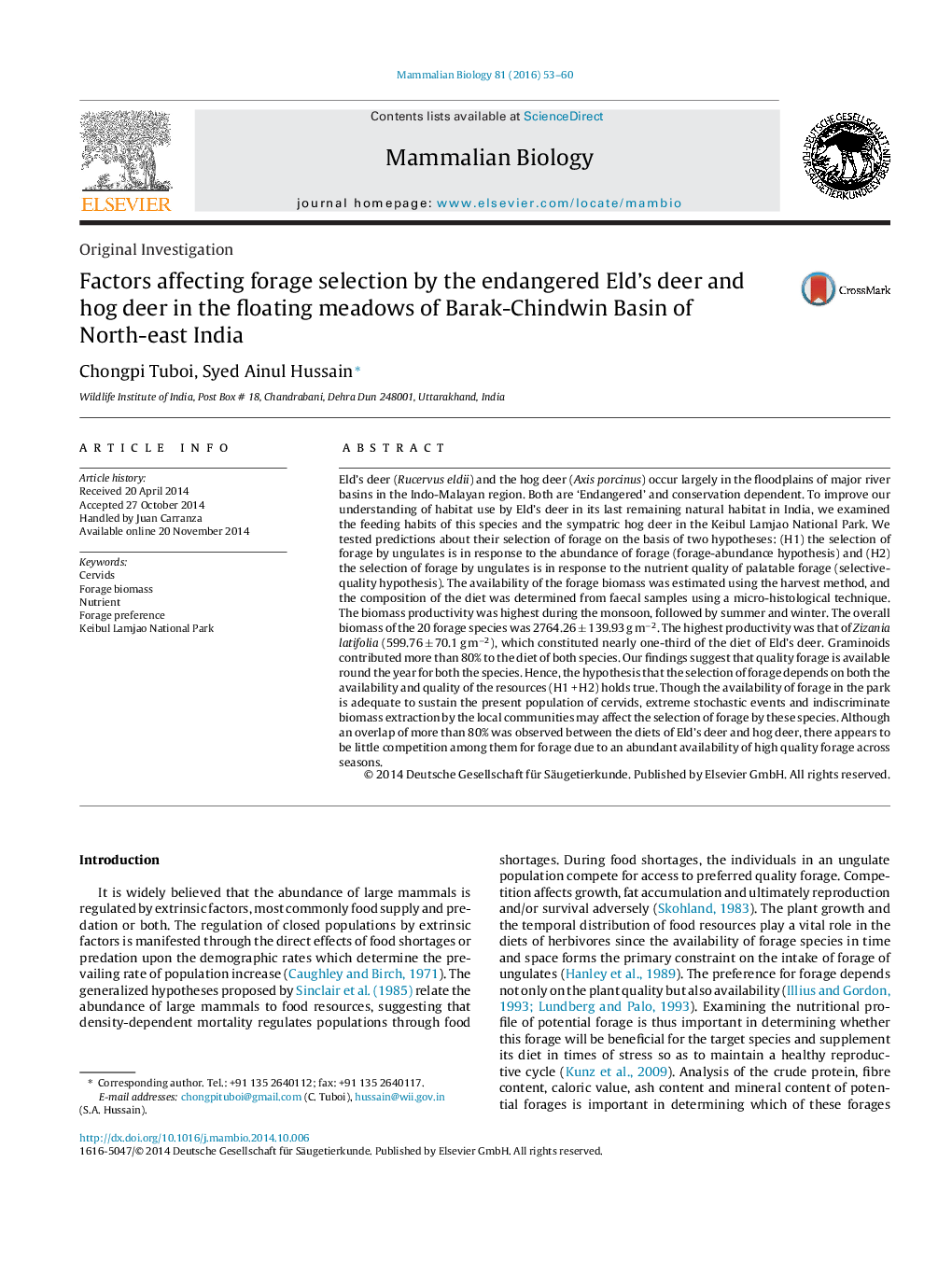| Article ID | Journal | Published Year | Pages | File Type |
|---|---|---|---|---|
| 2193355 | Mammalian Biology - Zeitschrift für Säugetierkunde | 2016 | 8 Pages |
Eld's deer (Rucervus eldii) and the hog deer (Axis porcinus) occur largely in the floodplains of major river basins in the Indo-Malayan region. Both are ‘Endangered’ and conservation dependent. To improve our understanding of habitat use by Eld's deer in its last remaining natural habitat in India, we examined the feeding habits of this species and the sympatric hog deer in the Keibul Lamjao National Park. We tested predictions about their selection of forage on the basis of two hypotheses: (H1) the selection of forage by ungulates is in response to the abundance of forage (forage-abundance hypothesis) and (H2) the selection of forage by ungulates is in response to the nutrient quality of palatable forage (selective-quality hypothesis). The availability of the forage biomass was estimated using the harvest method, and the composition of the diet was determined from faecal samples using a micro-histological technique. The biomass productivity was highest during the monsoon, followed by summer and winter. The overall biomass of the 20 forage species was 2764.26 ± 139.93 g m−2. The highest productivity was that of Zizania latifolia (599.76 ± 70.1 g m−2), which constituted nearly one-third of the diet of Eld's deer. Graminoids contributed more than 80% to the diet of both species. Our findings suggest that quality forage is available round the year for both the species. Hence, the hypothesis that the selection of forage depends on both the availability and quality of the resources (H1 + H2) holds true. Though the availability of forage in the park is adequate to sustain the present population of cervids, extreme stochastic events and indiscriminate biomass extraction by the local communities may affect the selection of forage by these species. Although an overlap of more than 80% was observed between the diets of Eld's deer and hog deer, there appears to be little competition among them for forage due to an abundant availability of high quality forage across seasons.
